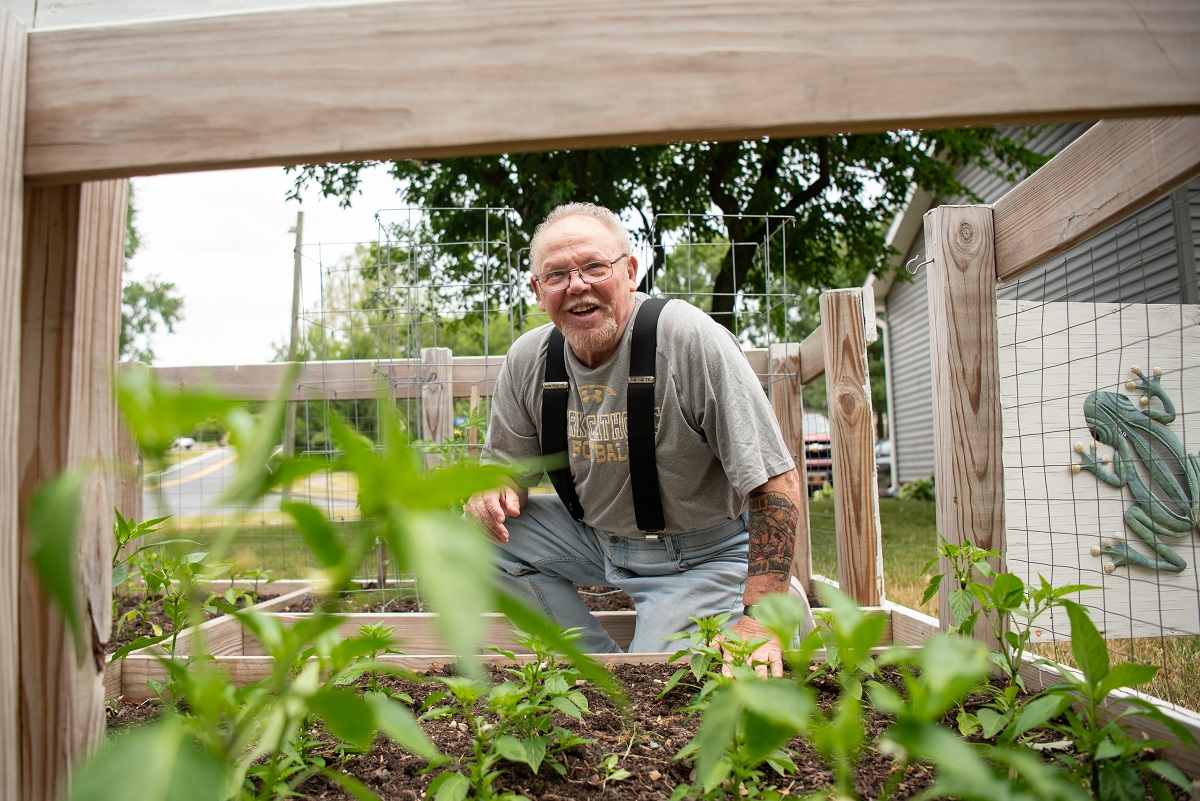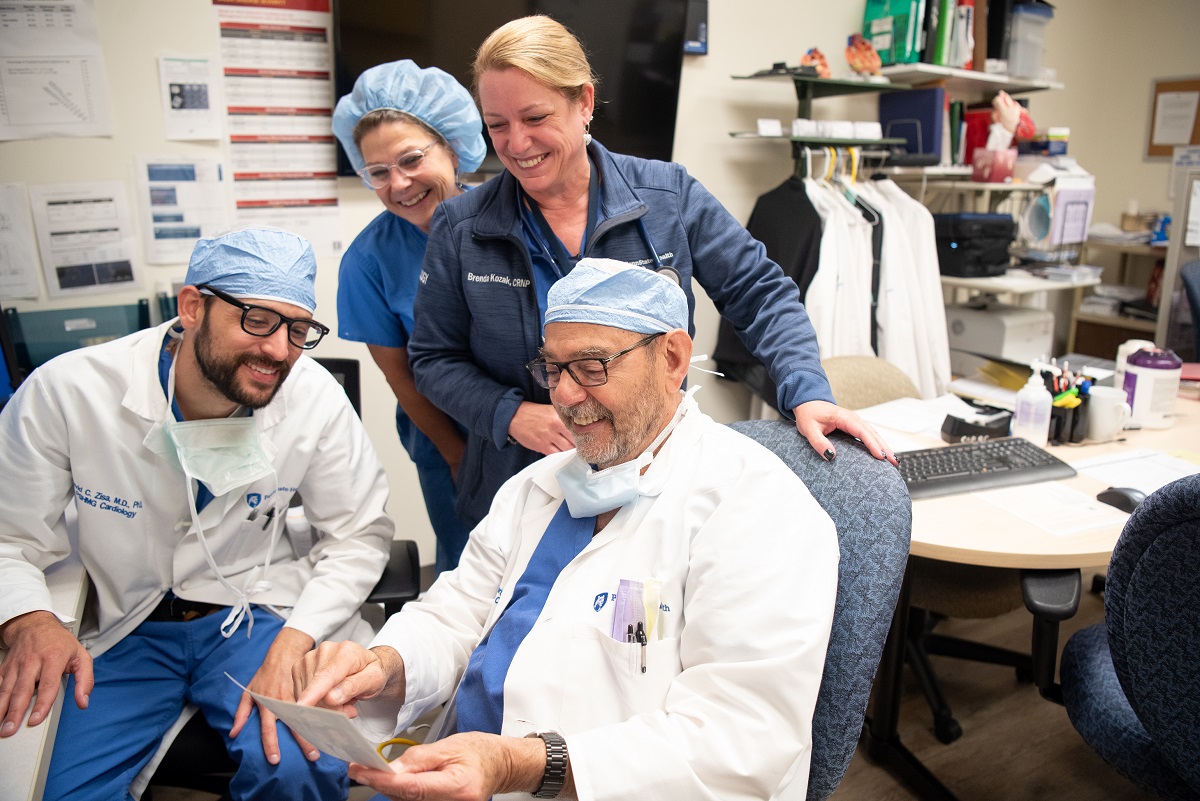10 years after first TAVR heart procedure, Berks Cardiology continues to innovate

In the last 10 years, John Kline has celebrated his 50th wedding anniversary, watched his grandchildren graduate from high school and college, attended the wedding of his youngest granddaughter and learned his first great-grandchild is on the way – important milestones for anyone. But for the 76-year-old Sinking Spring resident, being able to take part in these events is an extraordinary gift.
In 2013, Kline was diagnosed with severe aortic stenosis, a condition in which the aortic valve narrows and restricts blood flow to the main artery that carries blood to the body. However, due to calcium deposits that had formed on his aortic root, he was unable to safely undergo traditional open-heart surgery to replace his aortic valve. Instead, he would become the first patient in the Berks Region to have a minimally invasive heart procedure known as Transcatheter Aortic Valve Replacement or TAVR.
“I probably wouldn’t be here without it,” he said. “Every day I’m alive is a great day.”
Berks Cardiology performs region’s first TAVR
At the time, Dr. Guy Piegari, an interventional cardiologist at Penn State Health Medical Group – Berks Cardiology in Wyomissing was interested in advancing the TAVR procedure locally. But it wasn’t readily available. He recalls a lot of jockeying taking place among local health care providers and institutions to determine who would be first in the region to offer it. In the end, Berks Cardiology won the honor due to its reputation as an innovator in cardiovascular disease treatment, and Piegari got to work laying out a plan of action.
“The next step was to find the first clinically appropriate patient,” he said. “That was Mr. Kline.”
Kline didn’t hesitate to be a part of local medical history. Piegari, together with Dr. Hani Salha, performed the first TAVR procedure at Penn State Health St. Joseph Medical Center on May 23, 2013, as more than 20 staff members, device representatives, proctors, anesthesiologists and observers looked on within the room and from the observation window above. Using small incisions and a catheter to reach the heart, Piegari guided the replacement valve through the catheter and into the aortic valve that wasn’t working. Once in position, he inflated a balloon that would hold the new valve, made from cow or pig heart tissue, in place. The new valve began functioning immediately, and he removed the catheter.
“When I woke up, I felt great,” said Kline, explaining that his recovery included just three weeks of physical therapy. Today he is living life to the fullest. “I do a lot of auctioning, going here and there. I work in my garden. I trap shoot. I still go hunting and fishing.”
Although Kline continues as a Berks Cardiology patient, his cardiologist is Dr. Frank Politzer. However, he makes a point to stop by and see Piegari whenever he has an appointment in the building.
“He asks about me, and I ask about him,” Kline said. “He’s a gentleman’s gentleman.”
TAVR becomes ‘go-to procedure’

Before performing his final TAVR procedure, Dr. Guy Piegari, an interventional cardiologist with Penn State Health Medical Group – Berks Cardiology, and members of his team reminisce while looking at a photo from their early days working together. Seated from left are Dr. David Zisa, interventional cardiologist, and Piegari. Standing from left are nurse Elizabeth Buonora, structural heart coordinator, and Brenda Kozak, nurse practitioner.
Unlike Kline, many early TAVR patients experienced a slow recovery due to their age and other disorders or illnesses, according to Piegari. But, today’s patients recover more quickly, and many report same-day improvements.
Since the replacement of Kline’s aortic valve, Berks Cardiology’s structural heart team has completed about 350 additional TAVRs and watched it become the “go-to procedure” for aortic valve replacement in 2023.
“In the last 10 years TAVR has become much more commonly available and has surpassed surgical valve replacement for at least 75% of all people who need it,” Piegari said, adding that the techniques have become more refined, the equipment is better, and the process is easier to do. ”Instead of general anesthesia, almost all TAVRs are done under conscious sedation with no tube down the patient’s throat. They recover within an hour or two of the procedure. And, where patients initially had to be hospitalized for four days after the procedure, the vast majority now go home the next day.”
Pushing the boundaries of heart care
TAVR is just one example of how Piegari and his partners at Berks Cardiology have developed a reputation for being early adopters of new technology, techniques and treatments in interventional heart care. Additional procedures include Transcarotid Artery Revascularization, which treats carotid artery disease, the Watchman, which reduces the risk of stroke in patients with atrial fibrillation, and other structural heart interventions.
Pushing the boundaries in interventional cardiology was something Piegari learned during his training in the military and something he sought when he was looking for a practice to join.
“When I was looking for a position, I needed to find a place where I felt my colleagues and the administration were supportive of someone with progressive ideas and visions to move forward,” he said. “When I first joined Berks Cardiology, they were already doing things at St. Joseph Medical Center that weren’t being done across town. I found that to be exciting.”
In 2018, Berks Cardiology joined Penn State Health, ensuring patients had access to the most advanced diagnosis and treatment of heart conditions in Berks County. Now, as the practice celebrates its 50th anniversary and Piegari winds down his 42-year career as a cardiologist by transitioning to a part-time schedule, he admits the hardest part will be giving up his passion of working in the catheterization lab.
“As I step back from my usual role, I recognize the time has come to pass the baton to my partners,” he said. “I look forward to watching as they continue to push boundaries and enhance our reputation as an innovator in cardiovascular disease treatment.”
____________
Click the image below for a gallery of photos.
If you're having trouble accessing this content, or would like it in another format, please email Penn State Health Marketing & Communications.

